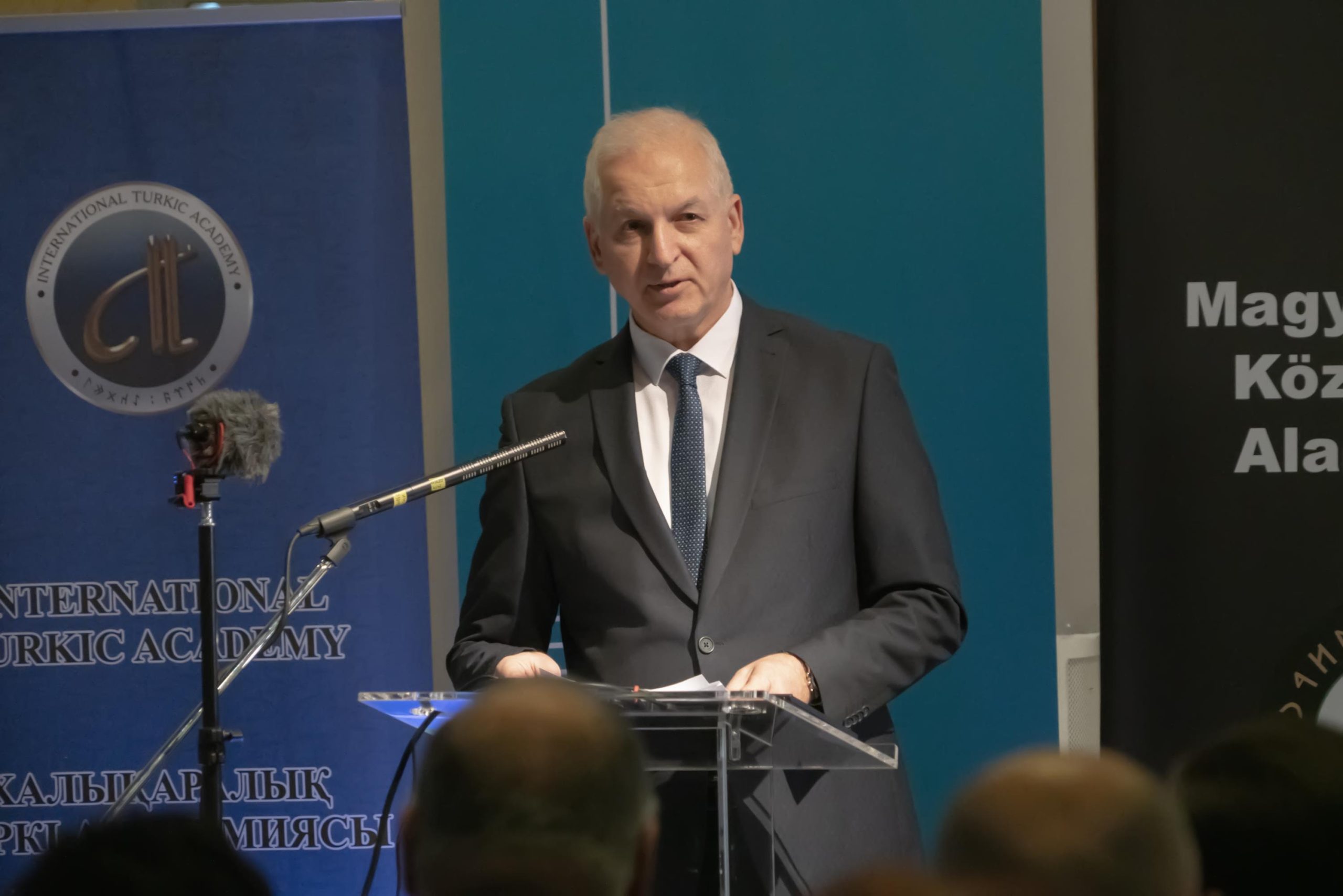The exhibition „Our Common Heritage Carved in Stone – the Latest Runic Finds of the Steppe” was opened in a ceremonial fashion. Zsolt Bernert, the Director General of the Museum of Natural Sciences, Miklós Lengyel, the Deputy State Secretary of the Ministry of Foreign Affairs and Trade responsible for training, scholarship programs and diplomacy in science, Shahin Majid Oglu Mustafaev, the President of the International Turkish Academy, András Zsolt Bíró, the President of the Hungarian–Turan Non-profit Foundation all delivered remarks. The Ambassadors of the Turkish states – Tahir Taghizade (the Republic of Azerbaijan), Gülşen Karanis Ekşioğlu (The Republic of Türkiye), Zhanibek Abdrashov (the Republic of Kazakistan), Talantbek Kushchubekov (the Republic of Kyrgyzstan) accredited to Budapest – also participated in the event. Ambassador János Hóvári, the Executive Head of the Representation Office of the Organization of Turkish States (OTS) in Budapest and his fellow diplomats also took part in the opening ceremony.
It is in the Hungarian Museum of Natural Sciences in Budapest that the exhibition of the runic finds is displayed for the first time in Europe in the organization of the International Turkish Academy, the Hungarian Museum of Natural Sciences and Hungarian–Turan Non-profit Foundation. This is the most significant collection of Old Turkish runic finds for the past decades, explored in Mongolia, in August, 2022. The exposition of the International Turkish Academy is complemented by the runic finds found in the Carpathian basin, the reconstructions of the stone blocks with runic inscriptions from the Orkhon River Valley (Central Mongolia), skulls from the times of the Conquest of the Carpathian Basin and those of the Turkish times, as well as the authentic reconstructions of the faces made of them. The exhibition can be visited in the Hungarian Museum of Natural History till January 31, 2023.
During the opening ceremony Zsolt Bernert, the Director General of the Museum of Natural Sciences, the host of the event, greeted the guests, the experts and organizations, cooperating in the implementation of the exhibition. He also drew the attention to the fact that these runic finds are displayed together for the first time.
In his opening remarks, Deputy State Secretary Miklós Lengyel pointed out that the Government of Hungary has built international diplomatic ties with the Turkish states. He also added that the exhibition displayed in the Hungarian Museum of Natural Sciences plays an outstanding role not only in international scientific life but in strengthening mutual ties as well.
Shahin Majid Oglu Mustafaev, the President of the International Turkish Academy emphasized the common historical roots of the Hungarian peoples and of the Turkish nations, as well as the significance of the cooperation with the experts from Hungary. In his speech, he referred to the Memorandum of Cooperation between the Hungarian Museum of Natural History and the Kazakh National Museum, signed in the fall of 2022, as well as the role of a “bridge” that the Hungarian–Turan Non-profit Foundation plays among the nations related to one another.
The President of the Hungarian–Turan Non-profit Foundation, András Zsolt Bíró, a researcher–anthropologist of the Hungarian Museum of Natural History, greeted the Ambassadors of the Turkish states to Budapest and the foreign guests in their own mother tongues. He underlined that the Hungarian Museum of Natural History is one of the pioneers of the scientific cooperation with the countries of the Turkish nations. In the past few years, the anthropological and genetic examination of the ancient peoples of the Euro-Asian steppe has been conducted in the framework of several research projects. These have greatly contributed to the more accurate understanding of the anthropological features of the peoples living there, as well as the modern examination of their relations with the ancient Hungarian peoples. András Zsolt Bíró added that the research into the origins and formation of the Hungarian people takes us as far as Central Asia and through certain components even to Inner Asia. One of the ancient components of the unique culture of the Hungarians is runic script which constitutes an important element of our common heritage with the Turkish peoples. The latest find from Mongolia, displayed in the exhibition, may be the earliest constituent of this ancient heritage.
The opening remarks were followed by lectures, and in the evening Ambassador János Hóvári, the Executive Head of the Representation Office of the Organization of Turkish States (OTS) in Budapest gave a reception in the honor of the President of the International Turkish Academy in the Ybl Villa. During the reception, the leading personalities of Turkology in Hungary had the opportunity to meet the President of the Academy and discuss new forms of cooperation.



